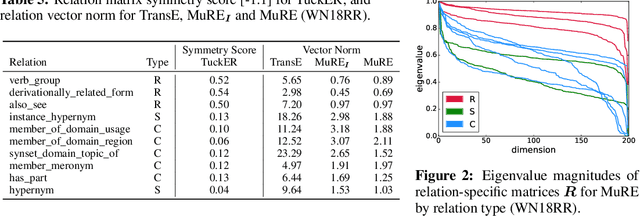On Understanding Knowledge Graph Representation
Paper and Code
Sep 25, 2019



Many methods have been developed to represent knowledge graph data, which implicitly exploit low-rank latent structure in the data to encode known information and enable unknown facts to be inferred. To predict whether a relationship holds between entities, their embeddings are typically compared in the latent space following a relation-specific mapping. Whilst link prediction has steadily improved, the latent structure, and hence why such models capture semantic information, remains unexplained. We build on recent theoretical interpretation of word embeddings as a basis to consider an explicit structure for representations of relations between entities. For identifiable relation types, we are able to predict properties and justify the relative performance of leading knowledge graph representation methods, including their often overlooked ability to make independent predictions.
 Add to Chrome
Add to Chrome Add to Firefox
Add to Firefox Add to Edge
Add to Edge